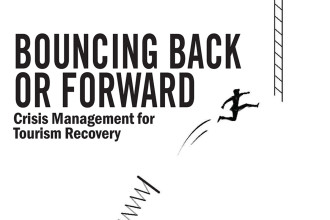
Ratnakar Adhikari Executive Director of the Enhanced Integrated Framework Executive Secretariat, World Trade Organisation

What is a better and more practical approach to building back the Nepali economy to come out of a one in a century global crisis?
There are several possible approaches of which the following are important: First, since the digital economy has grown much faster than any other sector of the economy, a major emphasis should be placed on strengthening the digital eco-system that allows most, if not all, workers to work from home, customs formalities to be completed in a paperless mode and all banking transactions, including payment of utilities, to be done online. More importantly, ecommerce, which now represents 30% of the global Gross Domestic Product, should be the major means of trading goods or services where possible. An added benefit of online transactions, which have gone up by at least 30% in Nepal since the onset of the pandemic, is the enhanced transparency of transactions, which enables the Government to increase tax revenue. Second, Nepal offers tremendous prospects for green growth, not only by utilising hydroelectricity, which is already happening, but also by raising the bar for green construction, circular economy, eco-tourism and exports of organic products listed in the Nepal Trade Integration Strategy (2016), including cardamom, ginger, tea, and medicinal herbs. Globally, USD 12 trillion worth of investment opportunities are available in sectors that contribute to the Sustainable Development Goals and Nepal should be able to tap into this, which brings me to the third approach. Third, there is a significant prospect of mobilising foreign direct investment given the diversity of sourcing strategies for the global value chain, of which countries such as India and Vietnam have already taken advantage. This is particularly important for Nepal – which, according to the latest issue of the Global Enabling Trade Report, is ranked number one in terms of foreign market access. This is due to global preferences such as the European Union’s “Everything but Arms” initiative and the Bilateral Trade Agreement with India, both of which provide duty-free market access to Nepal for almost all Nepalese products. Policies adopted in other least developed countries during Covid 19, such as fast-tracking investment approvals in Myanmar and digitising investment promotion activities in Mali can be replicated in Nepal too. However, while designing policies, care should be taken both during and after the pandemic to make growth inclusive. This can be done by providing special incentives for women, youth, micro, small and medium sized enterprises, and relatively remote regions where the incidence of poverty is high, to benefit from the opportunities mentioned above.As the government if you could implement at least one thing with immediate effect, what would it be?
I see digitising the economy as a low hanging fruit because: a) the global economy is already moving in this direction; b) the Nepalese private sector, as well as consumers/users, seem to be more amenable to engage in this area, as can be seen from its growth and popularity; and c) the Government of Nepal is in the process of designing a few initiatives such as the E-Commerce Bill and the digitisation of customs procedure, which will pave the way for the future of the digital economy. However, the remaining problems in the areas of infrastructure, skills, administrative procedures and the regulatory environment should be urgently addressed.Purushottam Ojha Former Secretary of Commerce, Government of Nepal

What is a better and more practical approach to building back the Nepali economy to come out of a one in a century global crisis?
Nepal is a predominantly an agricultural country. However, service sector is growing at a faster pace and contributes almost 58% to the GDP. The contribution of manufacturing sector spiralled down to 5.5% from 11% over the last two decades. All the real sectors are negatively affected due to unchecked spread of Coronavirus and the subsequent interruption of the normal economic activities, restriction on travel, transport and operation of businesses and industries. Bringing back the economic activities toward normalcy would require enhancing government support in increasing and diversifying agriculture in order to achieving food security and creating base for manufacturing and export. This requires re-energising the Prime Minister Agriculture Modernisation Program (PMAMP) with a targeted support for specific sub-sectors and identified agri-businesses. Subsidy in inputs for production, increased technical support and guaranteed markets for produce are important elements for reviving the agri-business. Secondly, effort should be made for increasing employment opportunities and restoring the jobs in manufacturing and services. This requires encouraging staffs and workers to return to their jobs with adaptation of health and safety protocols at work places. The job losses in manufacturing and service sectors particularly in travel and tourism, construction, health, education and transportation services is enormous and needs government intervention for revival. Government should ensure that stimulus announced during the beginning of crisis in March this year are honoured and effectively implemented. Thirdly, there should be regular review and necessary adjustment in the fiscal and monetary policy for buttressing the ailing industries and putting the derailed economy back on track.As the government if you could implement at least one thing with immediate effect, what would it be?
The spread of Coronavirus has impacted operation of industries and production units in almost all countries around the world, bringing them to a grounding halt in many instances. Migrant workers are losing jobs due to closure of industries and businesses. The consequential impact to Nepal is the swarming of migrant workers back home at a large scale, mainly employed in India, Malaysia and Gulf countries. Besides a more embarrassing and disgraceful situation arises with the backflow of the workers to India amid the unchecked spread of virus in that country. This is attributed to unavailability of employment opportunities for them within the country. People are fleeing the country for fear of being trapped in hunger, deprivation and lost livelihoods. Hence, the primary task for the government is to prepare a comprehensive plan for retention and utilisation of the young workforce within the country, giving them employment opportunities and sustained livelihoods. For this, local government should be mobilised to collect the information on returnee migrants, their areas of skills and interests; train and retrain them if needed and provide them technical and financial support to be engaged in productive employment. Self-employment opportunity will help them to become esteemed citizens of this country. The Prime Minister Employment Program (PMEP) of the Government of Nepal in association with the provincial and local governments should aggressively come forward in creating job opportunities for the youth within the country. This could serve as one of the means of lifting the young workforce out of the existing quagmire.Kushum Shakya Dean of Faculty of Humanities and Social Science, Tribhuvan University

What is a better and more practical approach to building back the Nepali economy to come out of a one in a century global crisis?
This is the second crisis that Nepal is facing; the first being the 2015 Nepal Earthquake. The crisis brought on by the Covid 19 is global and it’s not just Nepali economy that is suffering from the pandemic. The government could have done more to contain the spread of the virus in the first lockdown itself like Bhutan when we had just 3-4 cases. The government could have recorded the information of people who had arrived in Nepal via roadways or airways. The quarantine facilities could have been built faster and better, and main priority should have been given to containing and testing of the virus. Because of the poor planning and lack of leadership amongst the various parties involved in the government, we are in a haywire state. If proper planning and guidelines had been made during the first month of lockdown, we wouldn’t have gone through the months of lockdown and economical instability. Now people are more concerned about earning their livelihood than the repercussions of the virus. Going forward, the better and more practical approach to building back and reviving the economy is to invest in the human capital. Due to the pandemic, thousands of Nepali migrant workers have returned to Nepal and because they haven’t found any opportunities in Nepal, many are also opting to return to foreign employment. It is time to create opportunities in Nepal so that the Nepalis work for development of the country while remaining close to their families. Though the contribution of remittance to the national GDP of Nepal is more than 25%, it is a volatile source and the pandemic has proved it. We should be providing job opportunities to Nepalis and becoming self-sufficient in the areas we can like agriculture. Various training opportunities can be provided by the local governments because they are the active agencies of the provincial and central governments. Also for MSMEs and women-run business, low interest rate can be provided to encourage innovation and development of domestic products. Building back or reviving the economy is not just the work of the government, the citizens are also equally responsible. Rather than being careless and naïve about the virus, it is our responsibility to prevent the spread of the virus as well. We should follow the protective measures suggested by the medical experts like wearing masks and gloves in public places, washing and sanitising hands frequently, and avoiding unnecessary contacts.As the government if you could implement at least one thing with immediate effect, what would it be?
Protecting the health and livelihoods of the people should be the first priority of the government. Now is the time to think about building the economy domestically rather than relying on other countries for imports or funds. Because the revival of tourism and manufacturing industry is still a long shot due to the pandemic, Nepal being an agricultural country, the government should look forward in developing the agricultural sector even more so that we can be self-sufficient and also export our agricultural products, both cash and food crops, to other countries. It can be one of the sectors where a lot of job opportunities can be created so that Nepalis can opt to work in Nepal rather than going to other countries for foreign employment. This is one thing that the government can implement with immediate effect. And by government, I don’t mean just the central government. The provincial and local governments can take the initiative, plan ideas and implement it themselves as well.Pukar Malla Executive Chairperson and Founder, Daayitwa

What is a better and more practical approach to building back the Nepali economy to come out of a one in a century global crisis?
Youth is undeniably the foremost asset of Nepal, yet possibly the largest national export as well. Can we turn the Covid19-induced youth talent bulge into a self-sustaining trade surplus? In the wake of the pandemic, youth unemployment issue has heightened, deeply affecting Nepal’s economy. Real leadership calls for enabling the people with the problems to tackle their tough challenges. In that vein, how about finding and enabling genuine young entrepreneurs to take the economic imbroglio by its horns by growing innovative enterprises and generating employment opportunities for other youth? The approach’s mindset must be economic growth, significantly more than poverty alleviation. In other words, instead of providing grants, the approach should be facilitating loans or risk capital; instead of exporting raw materials, the approach should be exporting processed high-value products; instead of ‘train many and forget all’, the approach should be ‘train few and accelerate many.’ While this all may sound logical, the cold truth is that Nepali youth - the demographic majority yet power minority group - lack equitable access to innovation, investment and markets. While entrepreneurship is a much celebrated topic, much remains to be done in bolstering a vibrant municipal enterprise ecosystem such that a capable youth does not need to consider leaving one’s homeland forever in pursuit of economic freedom.
As the government if you could implement at least one thing with immediate effect, what would it be?
Nepal’s biggest challenge of youth export stems not from macro-level trade deficit but micro-level trust deficit. Whether we look at the social issues of health inequality, political issues of power inequality or economic issues of opportunity inequality, the youth-government trust gap is simply colossal. How can we bridge this gap by enabling youth and the government to achieve better results together?
If I were the government, I’d immediately launch a National Youth Employment Campaign with the goal of enabling local governments and local youth to collaborate intensely in creating jobs and growing local economies. Different from national programs such as PMEP or MEDPA, this program would have three objectives: first, support growth-oriented youth enterprises to create jobs; second, enable local governments to take the lead and build municipal enterprise ecosystems; and third, connect the municipal outcomes into a national campaign of hope and progress. I’d ensure that local governments lead the local implementation and facilitate the market forces - banks, private companies, and academic institutions - to coalesce effectively and equitably, while keeping the federal government’s focus on building trust, ensuring accountability and generating impact. I’d first run project pilots and learn deeply before scaling up fast. In other words, instead of focusing on the form - for instance, by ostentably launching the project in 753 municipalities - I’d focus on functions - by starting in few municipalities with a rigorous learning loop - so that the pilots propel into a program across the nation with locally relevant form and functions.
Dr. Pratistha Joshi Rajkarnikar Associate Director of Economics in Context Initiative at the Global Development Policy Center & Lecturer at the Frederick S. Pardee School of Global Studies, Boston University






